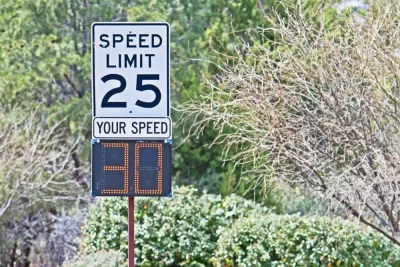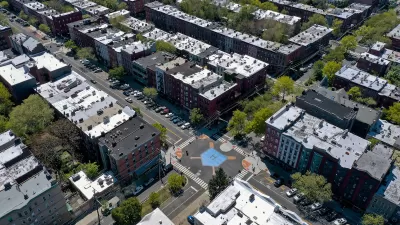The city announced a new cost-sharing plan and an expanded set of speed reduction devices available to neighborhoods wanting to improve traffic safety.

The Oklahoma City Public Works Department is restarting an alternative speed abatement program (ASAP) that lets community groups apply for new traffic calming devices on dangerous streets. As the Oklahoma City Sentinel reports, the program originally required applicants to pay the full cost of traffic calming devices, but the city will now fund half of each project.
According to a press release from the city, “The revamped program expands the traffic calming features available, decreases eligibility requirements for streets and removes the requirement to provide a conceptual plan.”
Streets eligible for the program must be public streets identified as neighborhood streets, connector streets, or industrial streets with speed limits below 25 mph or 30 mph, depending on the device requested. The traffic calming devices available include pavement markings, signage, speed humps and cushions, and mini-roundabouts.
See the source article for more information and a link to the application.
FULL STORY: Oklahoma City relaunches speed reduction program for neighborhoods

Planetizen Federal Action Tracker
A weekly monitor of how Trump’s orders and actions are impacting planners and planning in America.

The Simple Legislative Tool Transforming Vacant Downtowns
In California, Michigan and Georgia, an easy win is bringing dollars — and delight — back to city centers.

San Francisco's School District Spent $105M To Build Affordable Housing for Teachers — And That's Just the Beginning
SFUSD joins a growing list of school districts using their land holdings to address housing affordability challenges faced by their own employees.

In More Metros Than You’d Think, Suburbs are Now More Expensive Than the City
If you're moving to the burbs to save on square footage, data shows you should think again.

The States Losing Rural Delivery Rooms at an Alarming Pace
In some states, as few as 9% of rural hospitals still deliver babies. As a result, rising pre-term births, no adequate pre-term care and "harrowing" close calls are a growing reality.

The Small South Asian Republic Going all in on EVs
Thanks to one simple policy change less than five years ago, 65% of new cars in this Himalayan country are now electric.
Urban Design for Planners 1: Software Tools
This six-course series explores essential urban design concepts using open source software and equips planners with the tools they need to participate fully in the urban design process.
Planning for Universal Design
Learn the tools for implementing Universal Design in planning regulations.
Smith Gee Studio
City of Charlotte
City of Camden Redevelopment Agency
City of Astoria
Transportation Research & Education Center (TREC) at Portland State University
US High Speed Rail Association
City of Camden Redevelopment Agency
Municipality of Princeton (NJ)





























